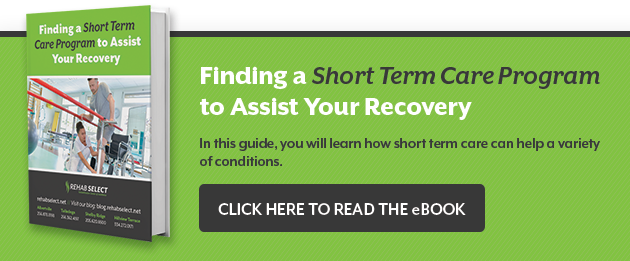
After an acute cardiac episode like a heart attack, patients receive immediate, life-saving treatment in the hospital. But recovery doesn’t end at discharge. When they’re stable but not ready to return home, many people are transferred to a short-term care facility for post-acute cardiac rehab.
Rehabilitation in this kind of setting provides crucial benefits for patients who are too weak or otherwise unprepared to go back to their day-to-day life, and it accelerates recovery compared to returning home.
Exploring the Advantages of Short-Term Cardiac Rehab Facilities
There are numerous options for recovery after a cardiac event, including outpatient treatment, at-home and private care, and community wellness programs. Each has its own advantages and disadvantages, but short-term cardiac rehab facilities are the right choice for many people just out of the hospital. Why? Patients typically require a more structured environment with medical oversight, scheduled cardiac rehab exercises, and ongoing professional support.
Cardiac rehab in a short-term care facility is ideal for individuals who:
- Aren’t medically stable. Patients often need round-the-clock monitoring for complications after a cardiac episode, as well as vital-sign checks, medication adjustments, and sometimes oxygen therapy.
- Lack physical strength. Healthcare professionals in cardiac rehab facilities can swiftly help individuals experiencing fatigue, shortness of breath, or mobility problems, all of which would make normal routines difficult.
- Need a safe setting to recuperate. People who return home too quickly after a heart attack or heart-related event can experience injuries from falls, medication errors, or complications that go unnoticed without the support of trained onsite professionals.
- Must have more intensive rehab early on. Without the right level of treatment in the first few weeks after discharge, patients are at higher risk for hospital readmission.
Short-term care facilities are cost-effective, offering the comprehensive services needed for rehabilitation in one place—including physical, cognitive, and occupational therapy, as well as nutritional and emotional counseling. Their post-acute cardiac rehab programs are also collaborative. Patients and their families are part of—not observers of—the medical team, fully involved in every decision during the process, so the patient regains independence as quickly as possible and has a strong support system for their long-term recovery needs.
What Cardiac Rehab Brings to the Table
In short-term cardiac rehab facilities, treatment for patients with heart issues is specialized and individualized. Rehab teams take a whole-person approach to care to ensure that individuals’ physical and emotional needs are addressed as they come to terms with what’s happened and what their future might look like. Cardiac rehab exercises are tailored to the pace at which each person recovers, starting from where they are and building from there.
Treatment plans consider patients’ comorbidities (other health conditions, such as diabetes) in addition to cardiac difficulties, and they may be designed to rebuild cognitive abilities in addition to physical ones.
Here are five major benefits of cardiac rehab for patients in short-term care facilities:
1. Safely and More Quickly Regain Strength
Cardiac rehab facilities are uniquely equipped to help patients rebuild physical strength in a carefully monitored environment. Because rehab plans are tailored to each person’s recovery level and comorbidities, patients can progress with their cardiac rehab exercises safely—without risking overexertion or setbacks. This structured approach often helps them regain mobility and independence more efficiently than they would at home.
2. Reduce Anxiety and Boost Confidence
The emotional impact of a cardiac event can be just as serious as the physical one. During cardiac rehab in a short-term care facility, patients receive consistent emotional support alongside clinical care, which helps ease fear and anxiety. As they experience daily progress in a supportive environment, many begin to feel more hopeful, in control, and ready to return to daily life.
3. Gain the Tools to Manage Heart Health
Education is a cornerstone of cardiac rehab in short-term care. Patients and families learn how to manage heart conditions, adjust to new routines, and adopt heart-healthy habits. Understanding the “why” behind medications, exercise, and diet helps patients feel empowered—and better prepared to sustain their recovery after discharge.
4. Improve Long-Term Health Outcomes
Early, comprehensive rehab lays the foundation for lasting heart health. Patients who participate in this level of structured care are more likely to maintain improvements, avoid complications, and reduce their risk of future cardiac events. It’s not just about recovering—it’s about staying well.
5. Prevent Hospital Readmissions
With regular monitoring, daily therapy, and coordinated care, short-term cardiac rehab facilities are able to catch potential issues early. This proactive approach reduces the chance of post-discharge complications and rehospitalizations—giving patients and families greater peace of mind.
Choosing the Right Setting for Recovery in Alabama Matters
Recovering from a heart attack or other cardiac event takes time, expert care, and a supportive environment. Short-term care facilities offer all three—providing personalized post-acute cardiac rehab, emotional support, and clinical oversight that patients often can’t get at home or in outpatient settings. The result? A safer, smoother recovery that restores strength, builds confidence, and reduces the risk of complications.
If you or a loved one in Alabama is preparing for discharge after a cardiac event, one of Rehab Select’s short-term rehab facilities could be the next best step.





